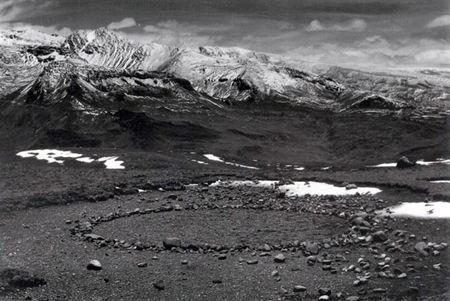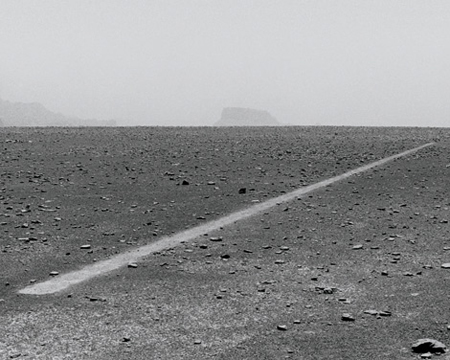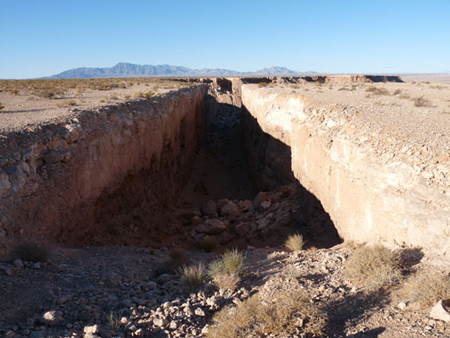The Walk of Fame
Richard Long
Circle in the Andes, 1972
‘Nature has always been a subject of art, from the first cave paintings to twentieth-century landscape photography. I wanted to use the landscape as an artist in new ways. First I started making work outside using natural materials like grass and water, and this led to the idea of making a sculpture by walking. This was a straight line in a grass field, which was also my own path, going ‘nowhere’. I like the idea of making something from nothing. In the mid-sixties I began to think that the language and ambition of art was too formal and orthodox. I felt it had barely engaged with the natural landscapes which cover our planet, or used the experiences those places could offer. Starting from my home territory and gradually spreading further afield, my work has tried to explore this potential. I see it as abstract art laid down in the real spaces of the world. It is not romantic; I use the world as I find it’. – Richard Long –
Dusty Boots Line Sahara, 1988
Michael Heizer
Double Negative, 1969-70
Double Negative is Michael Heizer’s first prominent earthwork. Double Negative consists of two trenches cut into the eastern edge of the Mormon Mesa, northwest of Overton, Nevada in 1969-70. The trenches line up across a large gap formed by the natural shape of the mesa edge. Including this open area across the gap, the trenches together measure 1,500 feet long, 50 feet deep, and 30 feet wide (457 meters long, 15.2 meters deep, 9.1 meters wide). 240,000 tons (218,000 tonnes) of rock, mostly rhyolite and sandstone, was displaced in the construction of the trenches.


